IMAGINATIVE PHANTASMAGORIA DOESN’T
PLUMB THE DEPTHS OF PLUMMER’S HISTORY
One of the most bemusing, bewildering affairs in recent memory, Señor Plummer’s Final Fiesta is an incredibly imaginative, immersive, interactive outing suffocated by convoluted storytelling and juvenile acting. While it’s rated “PG-13” the entire shebang of snippets — aided by puppets and wide-eyed, Disney-esque narrators — feels aimed at kids.
In the early 20th century, Los Angeles leaders dishonorably perpetuated the myth that this was a land teeming with orange groves (not arroyos and empty fields) and wholesome (i.e., white) Midwestern values. But people arriving in L.A. found that the film and oil industries’ explosion transformed a relatively sleepy cow-town into a Wild West boomtown, teeming with crime, vice and corruption. That same corruption, and the myth of L.A. as an oasis when it’s really a desert, was the basis for mid-century tales by Nathanael West and Raymond Chandler.
Myths were — and still are — a powerful propaganda tool used as an enticement for people to relocate to L.A. (Folks come from all over the world to live their dream, only to find it’s less a dream factory and more a dream repository). As such, the Los Angeles Times was, along with competitor William Randolph Hearst, sometimes a myth-maker and myth-perpetuator. In 1942, Times-Mirror published Señor Plummer: The Life and Laughter of an Old-Californian, an “as told to” book assembled by John Preston Buschlen (writing under the coy pseudonym of “Don Juan”).
Eugene Plummer was an original resident in the 1870s of what would become Hollywood, so he knew firsthand the disorderly town that Los Angeles was then. But he recounted these tales when he was about 90. Since Buschlen used an old man’s memories to serve the city’s myths, the book is equal parts history, diary, comic anecdote, boast, sad reflection, and dubious recollections (like the time he says he rode a shark). Think Mark Twain and Joel Chandler Harris, but without the literature.
According to a Times Contributing Editor, D.J. Waldie, the false nostalgia and recollections for a past that hardly anyone could recollect (and possibly not even Plummer himself) was less for keeping myths alive, and more as a campaign to keep Plummer on land he no longer owned. Plummer died a year after publication at 91, but the last parcel of his homesteaded land had already become Plummer Park in what is now West Hollywood, the very city that commissioned this work.
And this is where Señor Plummer’s Final Fiesta takes place. The park’s Great Hall has been transformed into that dusty, adobe-filled, Western town of Plummer’s memory with hacienda, saloon, caverns, and more. The main courtyard’s brick and red tile are complemented by Matthew G. Hill’s fanciful, astounding, almost cartoonish sets, which are a bit reminiscent of Knott’s Berry Farm.
It begins with a brief intro inside a theater where an actor portraying Buschlen is doing a lecture about his book (copies of which are actually on sale). A spectacular life-size puppet of Plummer appears, inviting us to relive the old days. At this point, you are free to choose whom to follow and where to go. And since there is no linear narrative or mystery to solve, it truly doesn’t matter. It’s impossible to see it all in one visit, but based on reports from my companion who went to different areas then I, you definitely get the gist no matter where you go. Individual stories will lead everyone to the main courtyard after an hour, after which you split up again for the second hour of various scenes. Feel free to sit, buy a snack, or use restrooms; with 20 actors on hand, there will always be someone near to assist.
You’ve never seen such a marvel of logistically triumphant creation and clever use of materials. It’s like one of those haunted mazes at Halloween, but without the scares. (A complete and simple set of instructions on how to interact is given beforehand.) Dioramas, shadow play, and Rogue’s trademark wizard masks and puppets (Jack Pullman, Morgan Rebane, Mark Royston, and Brian White) are used to full effect with stunning — and I mean stunning — video (Dallas Nichols), sound (Steve Swift) and lighting (Wesley Chew) at every turn. In true folkloric style, anthropomorphic characters are often used to heighten the sense of tall tales, and Elena Flores’s costumes (a shark, a wolf) are just amazing.
But here’s where it gets weird, if not tedious. Director Sean T. Cawelti has his highly infectious, loving, joyous, animated cast come across as overly friendly, unnatural, and presentational — as if we were an audience of preschoolers or mental patients being gently coaxed to move along after a scene. Indeed, some players reminded me of highschoolers who have been given the chance to act at their first Renaissance Festival. Sometimes you are invited to vote on something, or sing or dance along, but you are basically a spectator for this spectrum of sensorial scenes. The interaction is silly and frankly off-putting. (Because everyone I encountered was SO earnest, it feels like kicking a puppy dog to report this.)
Even more baffling is that the writing by Diana Burbano, Tom Jacobson, and Chelsea Sutton is positively sophomoric, as if being made up on the spot (expect to hear “You see…” as the precursor to a lot of sentences). What’s troubling is that most of the segments are rarely funny and, worse, usually difficult to follow (to say the least), while others are knowingly illogical. One opaque dreamscape has us burrowing through dark tunnels holding our own torches (the flashlights we use are amazingly synched to the drama at hand — the best lighting award of the year goes to Mr. Chew). Our guide presents horrors such as religious persecution, earthquakes and wrongful deaths while Señor Plummer’s voice echoes around us, “I don’t want to talk about this anymore.” As we move from room to room — at one point popping out of a hole like Whack-a-Mole with a noose around our necks — I think Oh my God this is so cool — I wish I knew what was going on. At the end of this segment, the guide, referring to the violence we just heard about, says, “At least Los Angeles isn’t like that anymore.” It isn’t?
In a very cool saloon — complete with swinging doors, ragtag piano, and a working bar (where you can buy a beer among Lauren Marina and Toni Barbosa’s remarkable props) — a woman with lamb’s ears as a hat sings highly unintelligible lyrics in an awkward operatic soprano. The woman next to me leaned over after five minutes and asked, “Has the scene started?” Some guests around me looked completely zoned out from the disorienting, befuddling dialogue. A few were munching away on some spicy, crunchy garbanzo-bean snacks from a bowl, while a few others started playing cards. When cues were picked up haphazardly, I swear it was like being given a tour of the nifty sets during a first rehearsal (and this was during the second weekend).
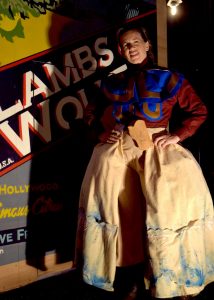 Since he worked as a courtroom translator and probably, as he says, an informal adviser to Spanish speaking Angeleños caught in the law, we have a scene where Plummer aids a Latina with a hand-held bird puppet who fights a brazen land grab with Plummer’s help, and us as the jury. An actor playing both judge and bailiff Punch-and-Judy-style screams annoyingly enough to wake the dead (well, it is Halloween-time, after all).
Since he worked as a courtroom translator and probably, as he says, an informal adviser to Spanish speaking Angeleños caught in the law, we have a scene where Plummer aids a Latina with a hand-held bird puppet who fights a brazen land grab with Plummer’s help, and us as the jury. An actor playing both judge and bailiff Punch-and-Judy-style screams annoyingly enough to wake the dead (well, it is Halloween-time, after all).
It’s more than fascinating to note that while Plummer identifies himself as Latino, his father was an Anglo sea captain and his mother, with sketchy connections to one Pacheco family, was born in Toronto. It is this Eugene Plummer — reinvented as Señor Don Eugenio Plummer (he’s referred to as “Genie” in some scenes) — who has tales to tell of the characters who populated Los Angeles before 1900, yet we really don’t learn much about Los Angeles or Plummer. Is this whole evening all meant to be taken con un grano de sal? Does it have to be so hopped up and surreal? It’s tough to join in a celebration of Plummer’s life at the play’s final fiesta when I’m having trouble seeing through the haze of hyperbole.
As with the very popular Wicked Lit, which has mediocre acting and storytelling at an actual mausoleum, some spectators may get a kick out of this. But theater should include great acting and writing, not just clever immersion gimmickry. Here is living proof of the myth that L.A. — as CTG Artistic Director Michael Ritchie said to tumultuous applause at the Ovation Awards ceremony — is the greatest theater town in the country.
photos by Chelsea Sutton
The ensemble is Ricky Abilez, Kawika Aguilar, Richard Azurdia, Tyler Bremmer, Magally Castellanos, McCristol Harris III, Mariux Ibarra, Amir Levi, Carene Rose Mekertichyan, Robert O’Hare, Sarah Kay Peters, Marta Portillo, Sheila of the Jungle, Tighe Skehan, Cary Thompson, and John Wuchte.
Señor Plummer’s Final Fiesta
Rogue Artists Ensemble
presented by City of West Hollywood’s Arts Division
Plummer Park, 7377 Santa Monica Blvd. in West Hollywood
Thurs–Sun at 7:30; Mon at 7:30 (Nov. 5 only; Pay What You Can)
ends on November 4, 2018 EXTENDED to November 18, 2018
for tickets, visit Rogue Artists
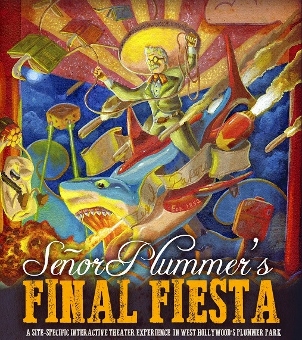
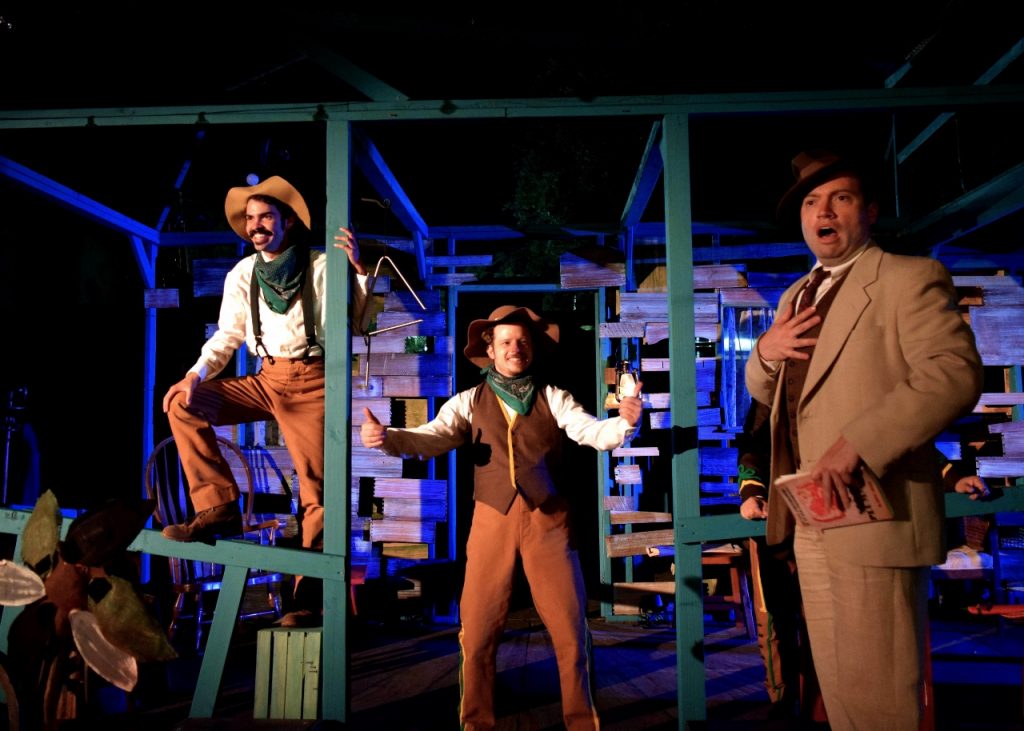
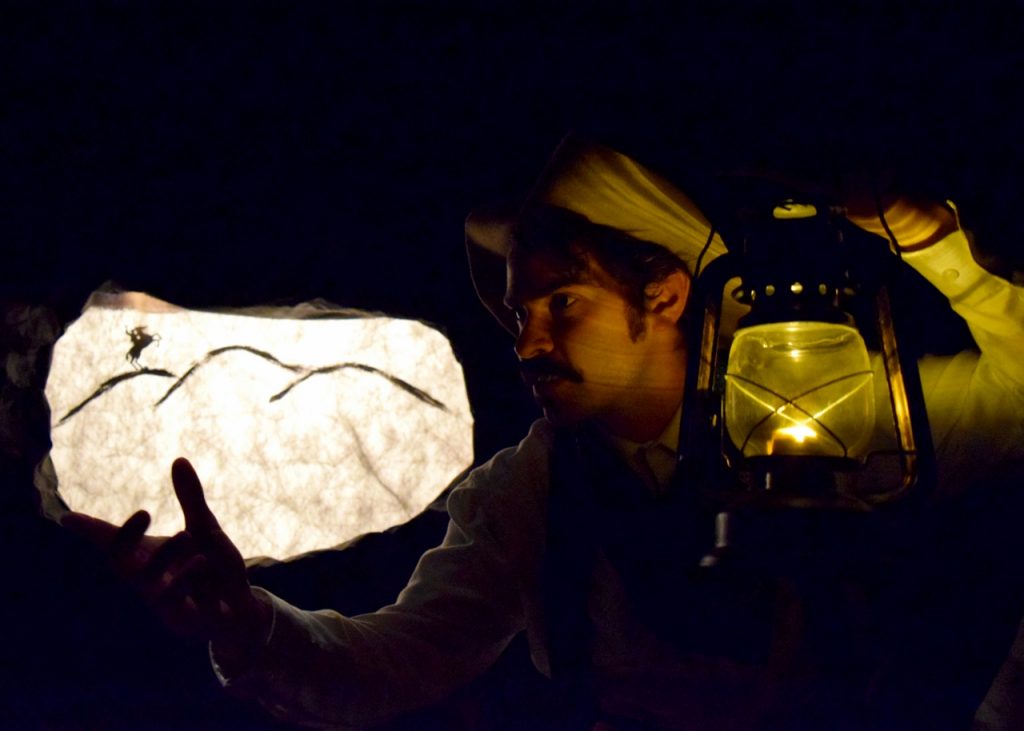
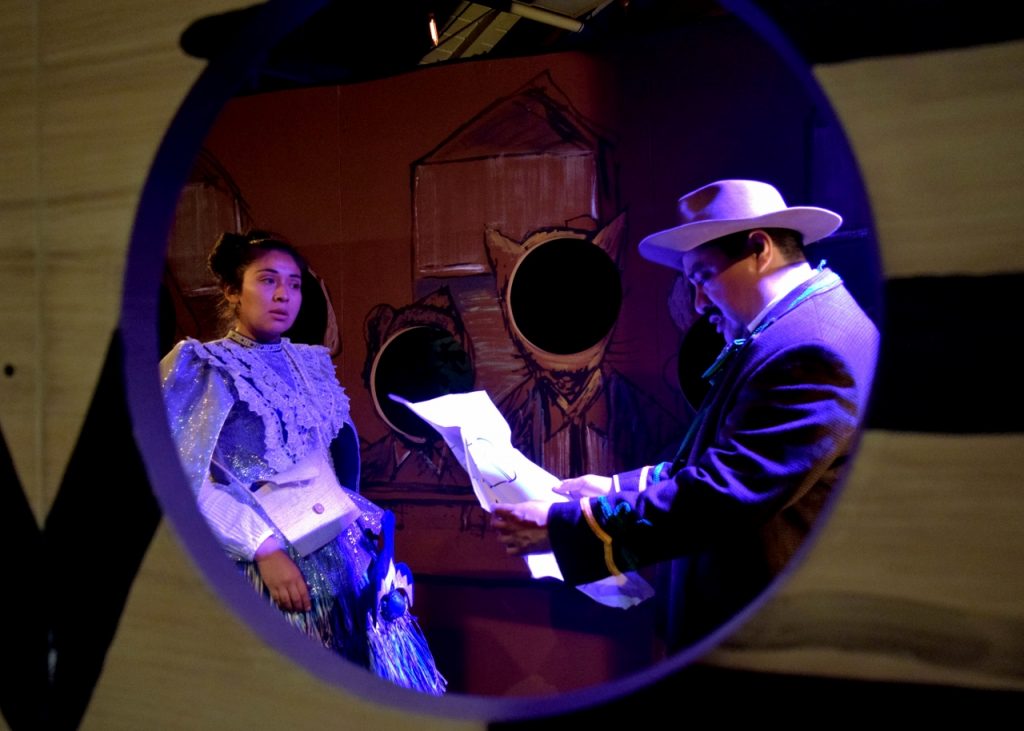
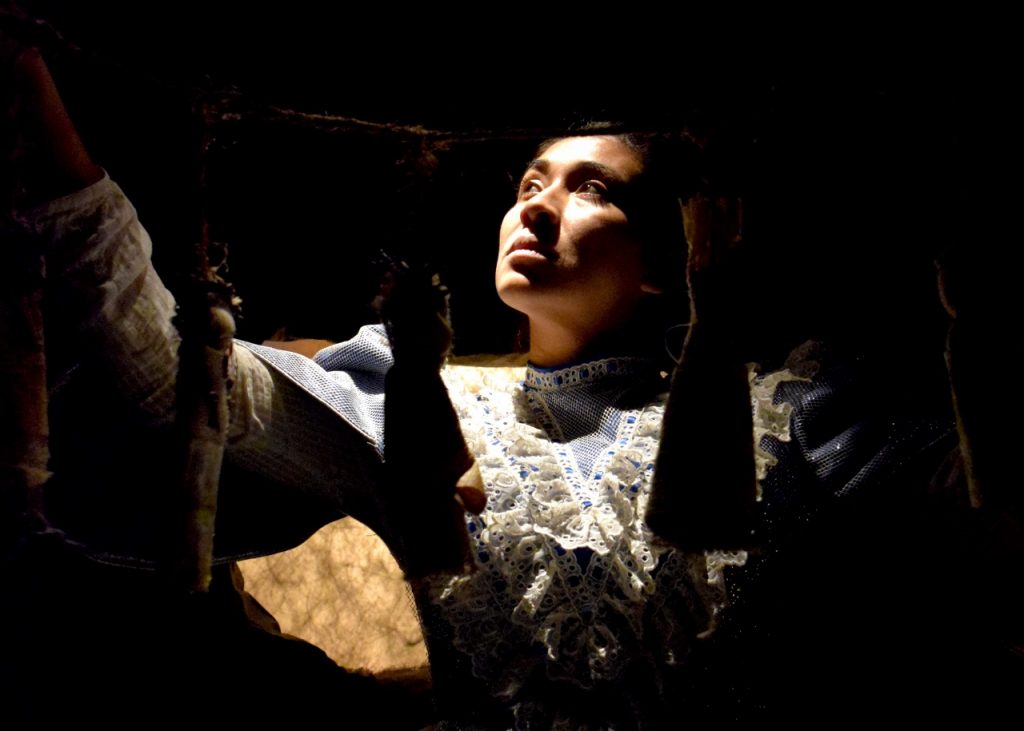
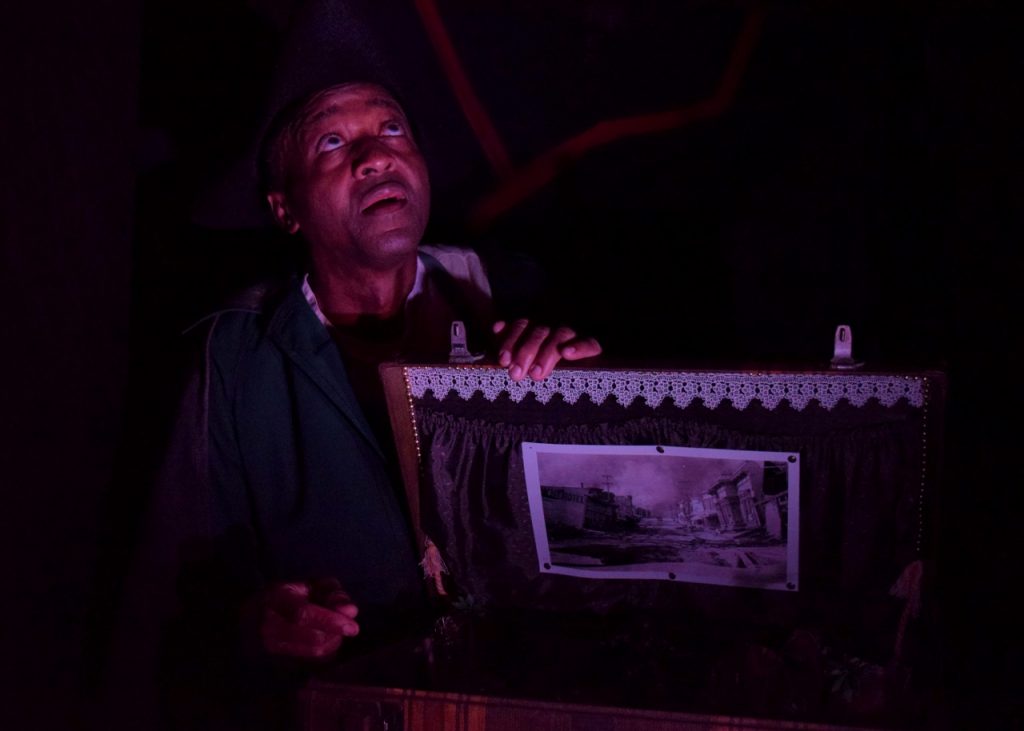
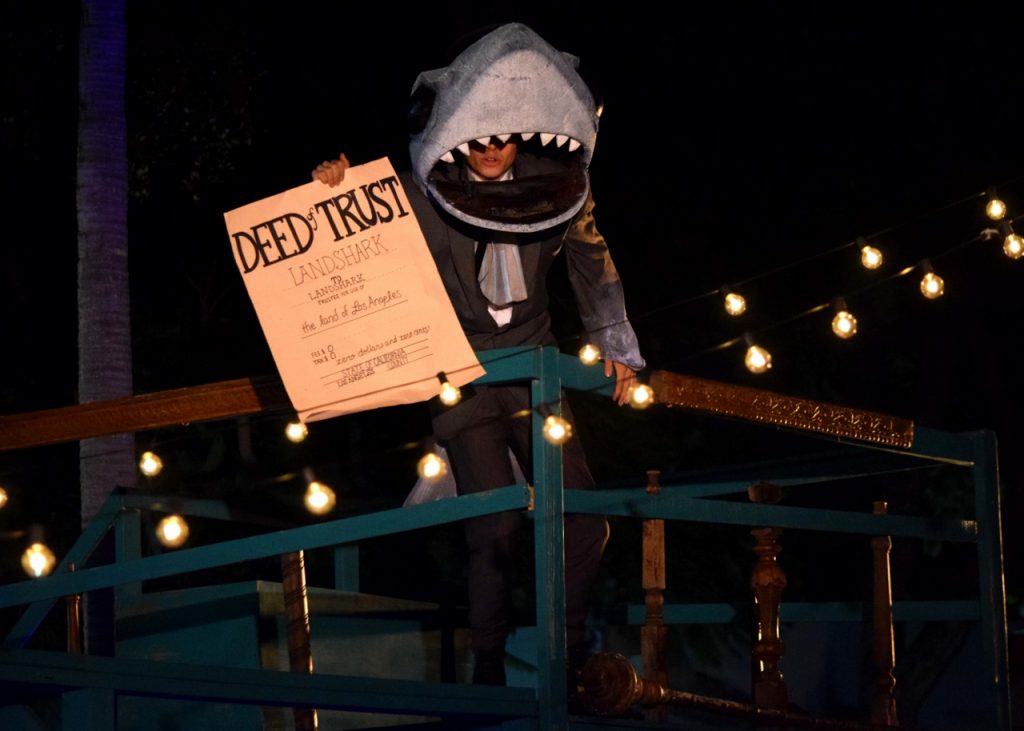
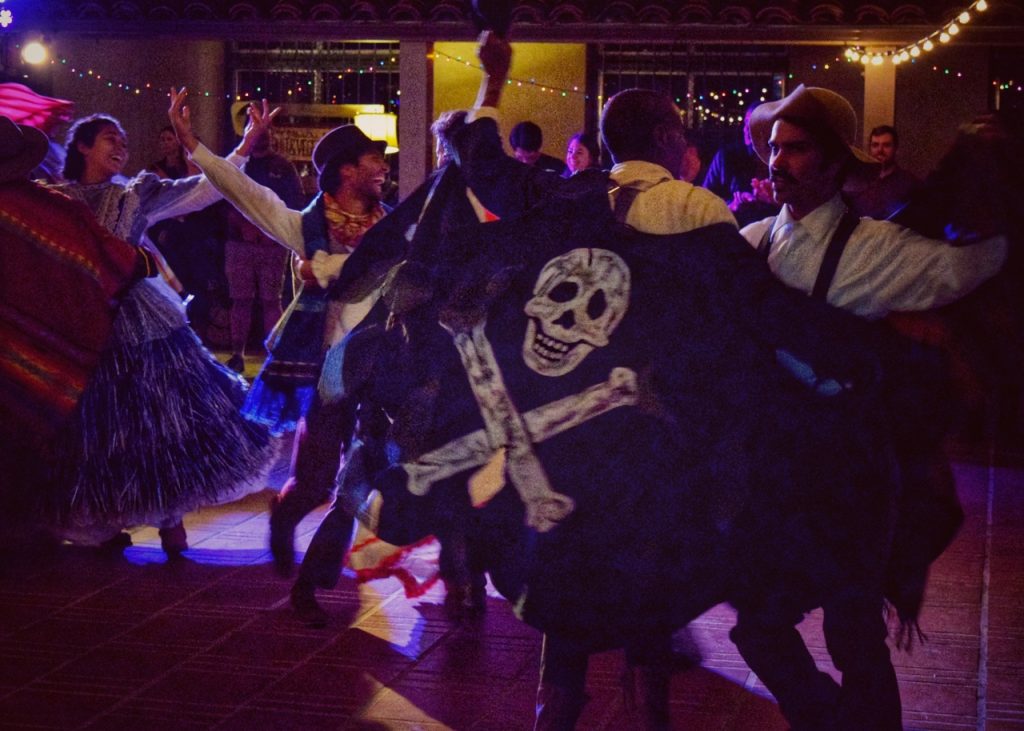
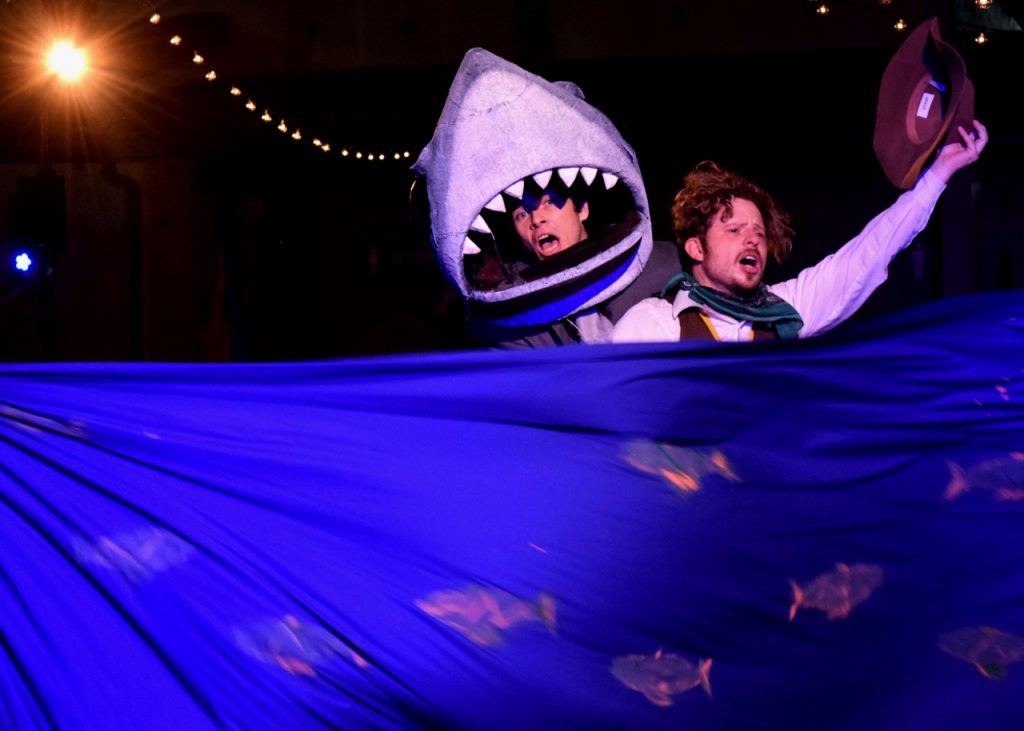
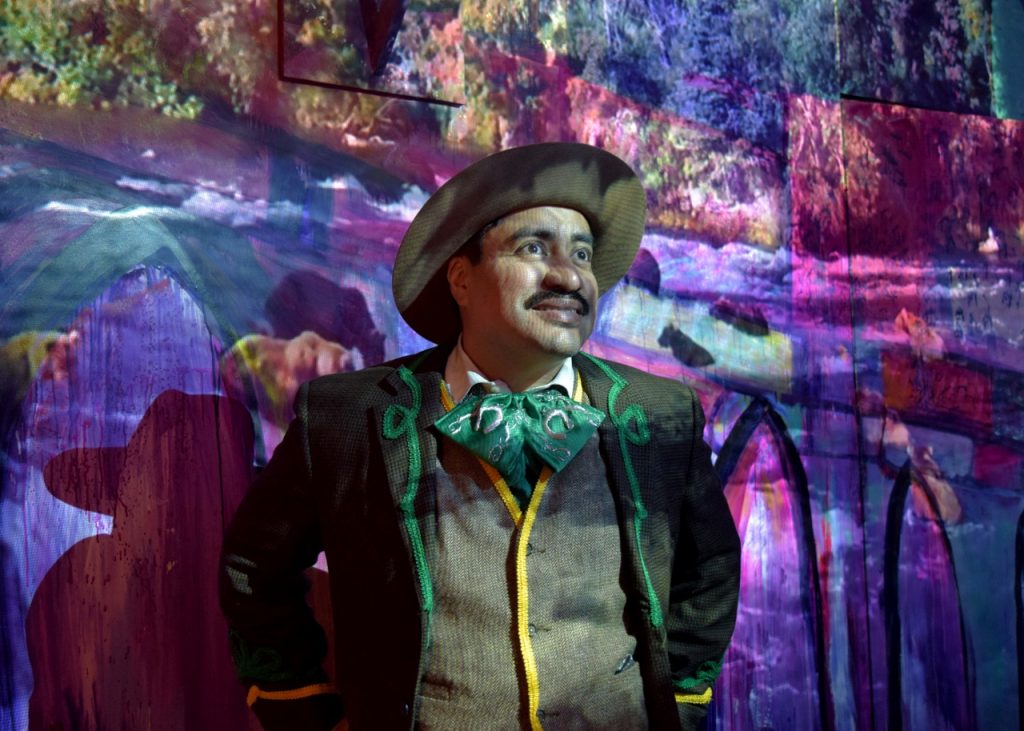
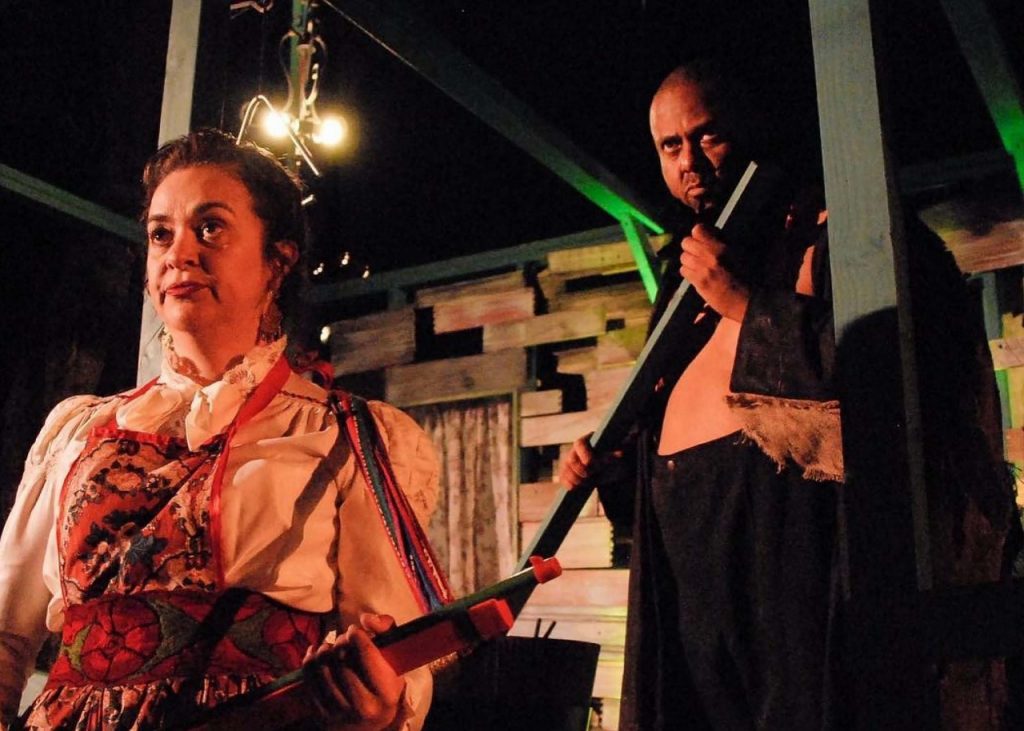
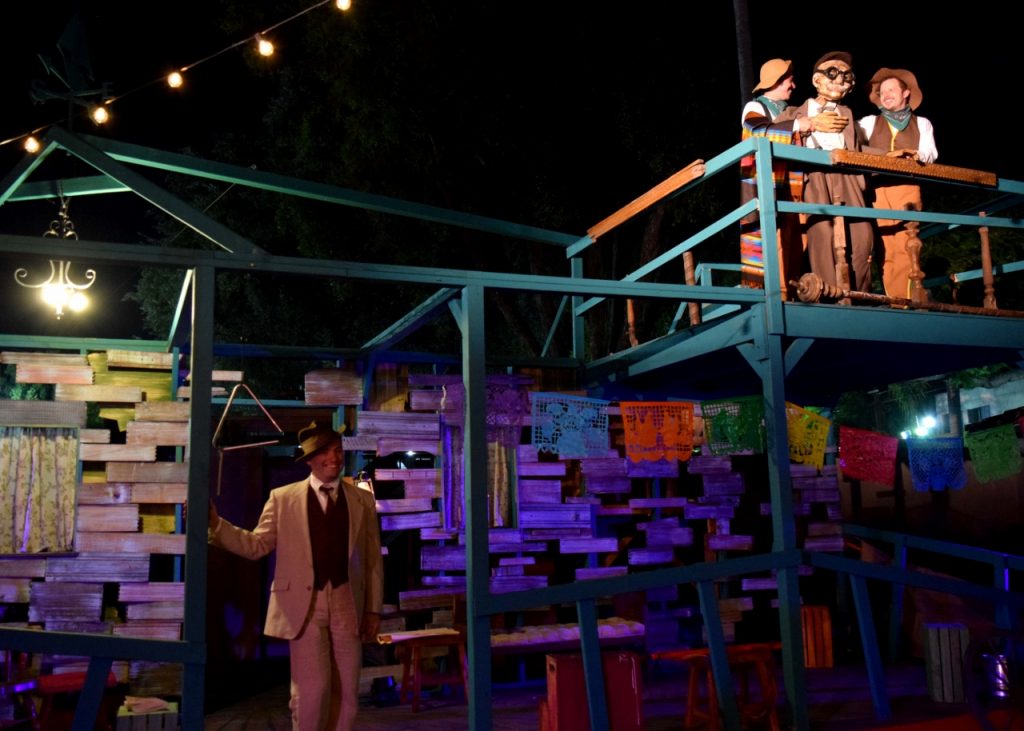

{ 1 comment… read it below or add one }
I liked Señor Plummer’s Final Fiesta, although I agree that parts of it were cheesy — and it was a little too long.